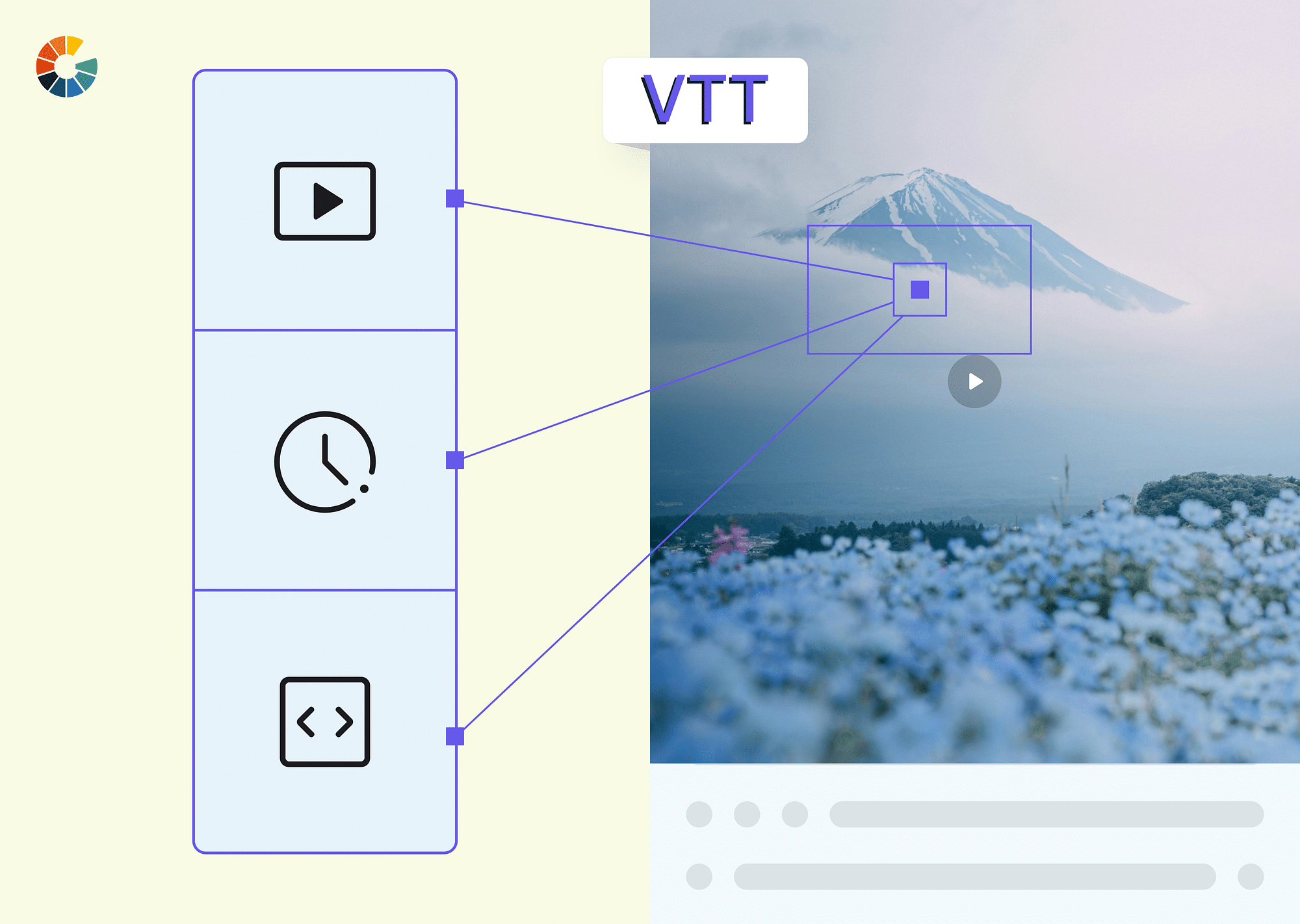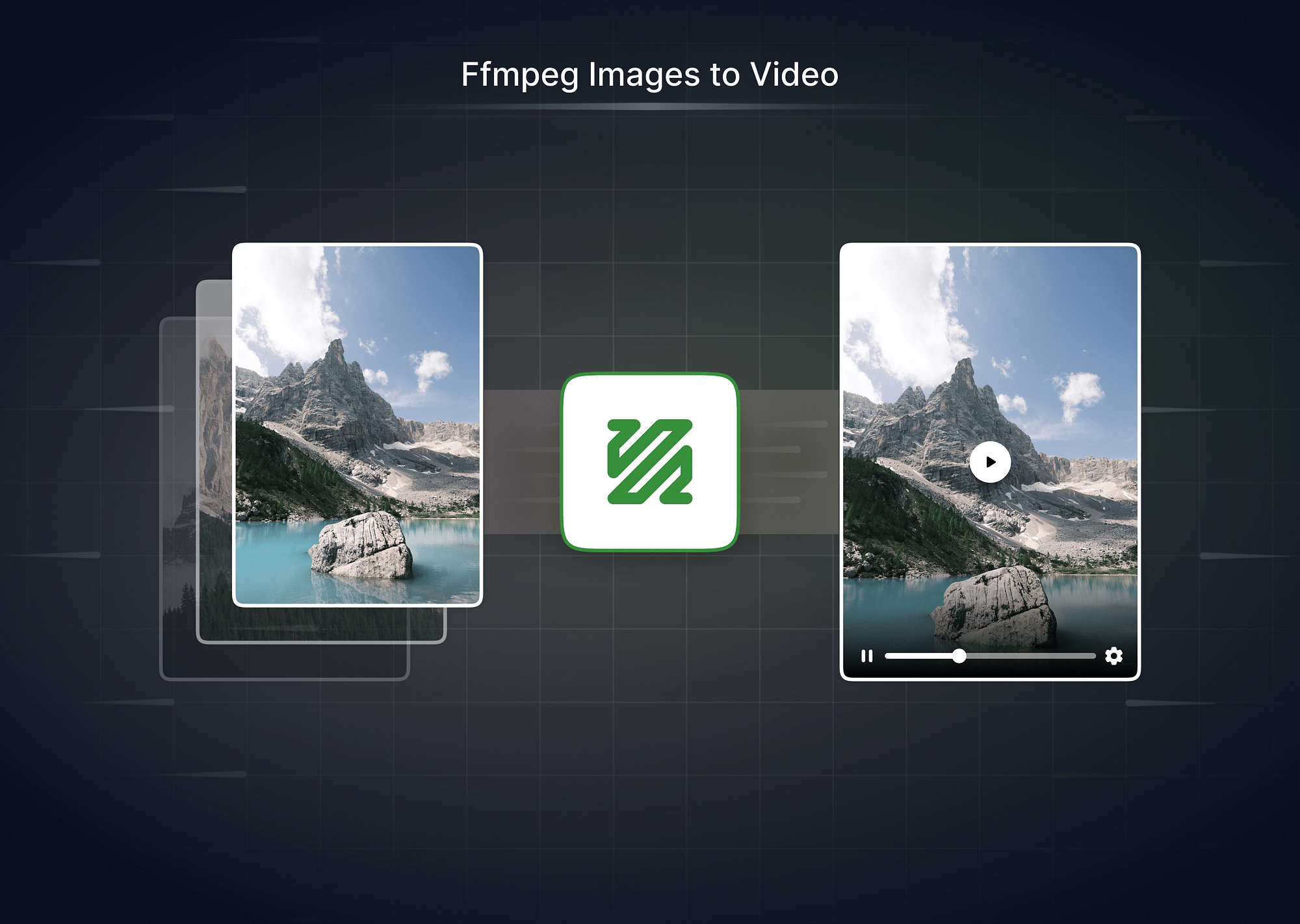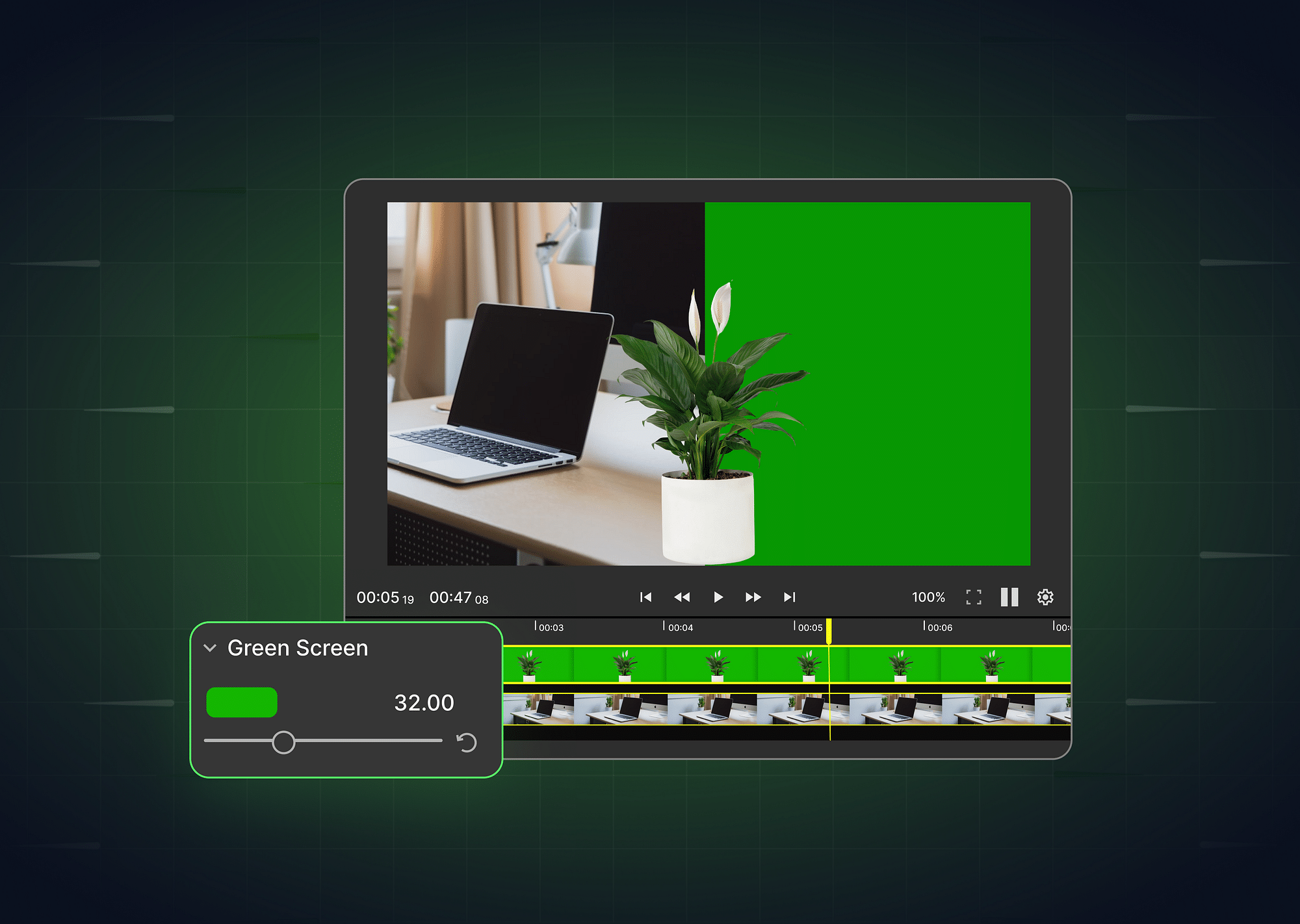This guide explains what VTT files are, how to open them, create new ones, convert them to SRT and more. Let's dive in!
What is a VTT File?
A VTT file, also known as a Web Video Text Track (WebVTT) file, is a simple text document format utilized for presenting subtitles or closed captions along with video content on the internet. These files are created to improve accessibility by assisting users in comprehending spoken language, sound effects and other audio components within videos. They are considered crucial aids for people who have difficulty hearing or prefer reading the text while watching videos.
The VTT file format can be read by HTML5 video players and has some extra features like metadata for language and description. These qualities make VTT more flexible than other subtitle formats, which do not allow these kinds of details to be added to the file. Since a VTT file can show text in time with audio, it's very useful for enhancing how users interact with content and following rules related to accessibility.
Let’s look at the WebVTT example to start our deeper understanding of what a VTT file is.
WebVTT Example
Here's a simple example of a VTT file:
WEBVTT
00:00:00.000 --> 00:00:04.000
This is the first caption.
00:00:05.000 --> 00:00:09.000
This is the second caption.How to Open VTT Files?
Opening VTT files and editing them is not complex and can be done using different tools. To begin with, you may open these files by employing any normal text editor or dedicated subtitle editing program. If it's the first method you want to use, try right-clicking on your VTT document, then select "Open with" from its options list before choosing something like Notepad, among other choices such as Sublime Text or VS Code if those are available too in your system setup. This way of opening VTT files lets you see and make changes at a lower level.
If you need more advanced options for editing a VTT file, try subtitle editors like Aegisub or Subtitle Workshop. They have friendly user interfaces and extra features to handle time codes and subtitles better.
Whether you're looking to understand what a VTT file is, how to open a VTT file, or how to edit a VTT file, these tools will make the process straightforward and efficient.
How to Edit VTT Files?
Editing VTT files is straightforward.
- Open the file in a text editor or subtitle editor.
- Make the necessary changes, and save the file.
- Ensure the time codes are accurate to maintain synchronization with the video.
How to Convert VTT to SRT or Vice Versa
Converting a VTT file to an SRT file or vice versa is a common task for those working with subtitles and captions. Several tools are available to make this process simple and efficient. Here, we outline some popular methods and tools for converting VTT to SRT and SRT to VTT.
Let’s quickly review some of the tools for converting VTT to SRT or vice versa, including online tools, software, and command-line tools.
Online Subtitle Converters
- How to Use: Upload your VTT file, select SRT as the output format, and click the convert button. The tool will generate an SRT file, which you can download instantly.
- How to Use: Navigate to the subtitle converter tool section, upload your VTT file, select SRT as the target format, and initiate the conversion. After the process is completed, download the SRT file.
Subtitle Editing Software
- How to Use: Open Subtitle Edit and load your VTT file. Go to the "File" menu, select "Save as," choose SRT as the output format, and save the file.
- How to Use: Open Aegisub and import your VTT file. Make any necessary edits, then go to "File," select "Export Subtitles," choose SRT format, and save your file.
Command Line Tools
- How to Use: FFmpeg is a powerful command-line tool used for multimedia processing. To convert VTT to SRT, use the command:
ffmpeg -i input.vtt output.srt - Replace input .vtt with the name of your VTT file and output.srt with your desired output file name.
- How to Use: Clone the repository from GitHub, navigate to the directory containing the script, and run the Python script with your VTT file as input: python vtt_to_srt.py input.vtt
This will generate an SRT file from the VTT file. These methods and tools efficiently convert VTT files to SRT and vice versa, making it easy to handle subtitle formats for various applications.
VTT vs SRT: Which is Better?
VTT (WebVTT) and SRT (SubRip Subtitle) are the most frequently employed subtitle formats. Familiarizing yourself with their differences and understanding when to utilize each may assist you in selecting the appropriate option for your videos. In that light, let’s look at a detailed comparison of VTT vs. SRT formats and understand which is better in what situations.
Detailed Comparison of VTT vs SRT Formats
| Feature | VTT (WebVTT) | SRT (SubRip Subtitle) |
|---|---|---|
| Usability | Primarily used for web-based applications | Widely used across various media players and platforms |
| File Extension | .vtt | .srt |
| Metadata Support | Yes, supports metadata like language and description | No, only supports basic subtitles |
| HTML5 Compatibility | Fully supported | Not natively supported |
| Time Format | Hours:Minutes:Seconds.Milliseconds | Hours:Minutes:Seconds,Milliseconds |
| Advanced Features | Supports styling, positioning, and metadata | Basic subtitle format without advanced features |
| File Size | Slightly larger due to additional metadata | Smaller, containing only essential subtitle information |
Pros and Cons of VTT (WebVTT)
Pros:
- Rich Metadata: Supports metadata, including language, description, and more.
- Styling and Positioning: Allows for advanced styling and positioning of subtitles.
- Web Compatibility: Fully compatible with HTML5 video players, making it ideal for web-based video content.
Cons:
- Limited Offline Support: Not as widely supported by offline media players and older devices.
- Slightly Larger File Size: Due to additional metadata and styling information.
Pros and Cons of SRT (SubRip Subtitle)
Pros:
- Wide Compatibility: Supported by almost all media players and devices.
- Simple and Lightweight: Easy to create and edit, with smaller file sizes.
Cons:
- Lacks Advanced Features: No support for metadata, styling, or advanced positioning.
- Limited Web Support: Not natively supported by HTML5 video players, requiring conversion for web use.
Which is Better: VTT or SRT?
Which format is better? It depends on your use case:
- Use VTT if: You are working with web-based video content and need advanced features like metadata, styling, and positioning. VTT is the better choice for enhancing user experience on modern web platforms, especially when using HTML5 video players.
- Use SRT if:Use SRT if you require broad compatibility across various media players and devices and your needs are basic. SRT is ideal for offline use, traditional media players, and situations where simplicity and lightweight files are important.
How to Create a VTT File?
Creating a VTT file is a straightforward process that can be done using a text editor or specialized subtitle editing software. Here’s a step-by-step guide to help you create a VTT file:
Step-by-Step Guide to Create VTT File
- Open a Text Editor: Use any plain text editor such as Notepad (Windows), TextEdit (Mac), or Sublime Text. These editors are ideal for creating and editing VTT files.
- Start with the VTT Header: At the very top of the file, type WEBVTT. This is essential as it indicates that the file is a WebVTT file.
- Add Subtitle Cues: Subtitle cues consist of a start time, an end time, and the text to display. Each cue should be separated by a blank line.
The time format is Hours:Minutes:Seconds.Milliseconds and you use the --> arrow to separate the start and end times.
00:00:00.000 --> 00:00:04.000
This is the first caption.
00:00:05.000 --> 00:00:09.000
This is the second caption.- Save the File: Save your text file with a .vtt extension. For example, subtitles.vtt. Make sure to select the correct file type (all files) and encoding (UTF-8) if your text editor has these options.
How to Generate a VTT File for Free?
Generating a VTT file for free is possible using various online tools and free software. Here are some methods you can use:
- Using Online Tools: You can use online tools like Amara and Kapwing to generate a VTT file for free.
- Using Free Software: You can use online tools like Aegisub and Subtitle Edit to generate a VTT file for free.
These tools and software provide free and easy ways to generate VTT files, making it simple to add professional-quality subtitles to your video content without any cost.
How Do I Check VTT File for Errors?
Checking for errors in your VTT files is very important to maintaining the quality and timing of your subtitles. Mistakes in VTT can cause problems like wrong timing for subtitles, missing text, or incorrect setup—all these issues can really disturb how people watch videos. You can make sure no errors are present inside VTT files by hand or using special tools made just for this job.
Manual Inspection means you open the VTT file in a text editor like Notepad or Sublime Text and go through it meticulously. Look for problems that may frequently occur, such as wrong time codes, cues with missing or extra blank lines between them, and the correct structure of each subtitle block.
WebVTT validators
For a more automated and quick method, the use of WebVTT validators can assist in finding errors. Some suggested tools are:
- W3C WebVTT Validator: This internet tool comes from the World Wide Web Consortium (W3C) and is made to check if your WebVTT files are correct. You can put in your VTT file or directly copy its content into this validator. After you do that, the tool will examine it and show any mistakes or alerts found within the file. This tool is very helpful for looking at syntax and structure in your VTT file.
- Subtitle Tools WebVTT Validator: This is another trustworthy online tool. You can upload your VTT file or directly paste its content for validation. The tool will give a report on any found errors, like wrong time codes and formatting problems. It's a simple method to check if your VTT file is formatted properly and correct it quickly as well.
- Amara: We know Amara as a place where you can create subtitles together, but it also has features for verifying them. When you load your VTT file or connect it to the video, Amara will use its tools to automatically inspect and suggest corrections for usual mistakes. This can be helpful if you are doing teamwork or want an all-in-one answer for making and confirming subtitles.
Verifying your VTT files frequently with these tools is very useful. This practice aids in maintaining the standard of your subtitles, providing a smooth and easy-to-understand viewing atmosphere for those watching.
How to Translate VTT Files for Multilingual Use?
Translation tools like Amara or subtitle editing software can help translate VTT files. You can also manually translate the text within the VTT file.
How to Convert a VTT File to a Word File?
To convert a VTT file to a Word file:
- Open the VTT File: Use a text editor.
- Copy the Text: Copy all the content.
- Paste into Word: Open Microsoft Word or any word processor and paste the copied text.
- Save as Word Document: Save the file with a .docx extension.
How to Add a VTT File to a Video?
The process of adding a VTT file is based on whether you are using HTML5 video players for online content or separate media players when watching offline. Here's an in-depth explanation of how to add VTT files with videos on various platforms:
Adding VTT Files in HTML5 Video Players
HTML5 video players, the standard choice for presenting video content on the web, can easily incorporate a VTT file. This is done by utilizing the <track> element.
- Prepare Your VTT File: Ensure your VTT file is correctly formatted and saved with a .vtt extension.
- Embed the VTT File in Your HTML: Utilize the <track> element within the <video> tag to connect your VTT file. The kind characteristic determines what type of track it is (e.g., subtitles, captions), while the src characteristic shows where this VTT file resides.<video controls>
<source src="video.mp4" type="video/mp4">
<track kind="subtitles" src="subtitles.vtt" srclang="en" label="English">
Your browser does not support the video tag.
</video>- Upload Files to Your Server: Ensure both your video and VTT files are uploaded to your web server and correctly referenced in your HTML code.
Adding VTT Files in Standalone Media Players
Many standalone media players support external subtitle files, including VTT files. Here’s how to add VTT files to videos in some popular media players:
- VLC Media Player:
- Method 1:
- Open VLC Media Player.
- Go to Media > Open File and select your video file.
- Go to Subtitle > Add Subtitle File and select your VTT file.
- Method 2:
- Ensure your VTT file has the same name as your video file (e.g., video.mp4 and video.vtt).
- Place both files in the same directory. VLC will automatically load the VTT file when you play the video.
- Method 1:
- Windows Media Player:
- Windows Media Player does not natively support VTT files. You may need third-party plugins like DirectVobSub to enable subtitle support.
- Alternatively, convert your VTT file to SRT using online tools or software, and then load it as an external subtitle.
- QuickTime Player:
- QuickTime Player does not natively support VTT files. Convert your VTT file to SRT using a subtitle converter, then add the SRT file via the View > Subtitles menu.
How to Play VTT Files?
Here’s how to play VTT files on various platforms:
Playing VTT Files in HTML5 Video Players
- Embedding in HTML:
- Use the <track> element as described above to embed the VTT file in your HTML video player.
- Ensure the VTT file is correctly linked and the <track> element is placed within the <video> tag.
- Browser Compatibility:
- Modern browsers like Chrome, Firefox, Safari, and Edge support HTML5 video players with VTT files. Ensure your browser is up to date for the best compatibility.
Playing VTT Files in Standalone Media Players
- VLC Media Player:
- VLC Media Player automatically detects and plays VTT files when they are named the same as the video file and placed in the same directory.
- You can also manually load VTT files through the Subtitle menu.
- Windows Media Player:
- Use third-party plugins like DirectVobSub to enable VTT file support.
- Alternatively, convert VTT files to SRT if you encounter compatibility issues.
Key Takeaways
- VTT files, also known as WebVTT files, are very important for showing subtitles, captions and other text-based details with video content on the internet.
- These files are widely used in HTML5 video players and come with features such as metadata support or the ability to style them nicely.
- As we discussed in the article above, you can create a VTT file using a text editor or subtitle editing software.
- When comparing VTT vs SRT for web-based applications, VTT is the better choice because of its advanced features. On the other hand, SRT works well with many media players.
- It is important to validate your VTT files so that they can play correctly without any mistakes.
- Adding VTT files to videos can be done through HTML5 video players using the <track> element or by using media players like VLC and QuickTime.
- Playing VTT files across different platforms ensures that subtitles are displayed correctly, enhancing the accessibility and user experience of your video content!




